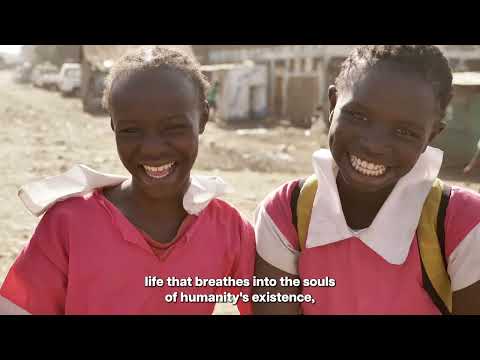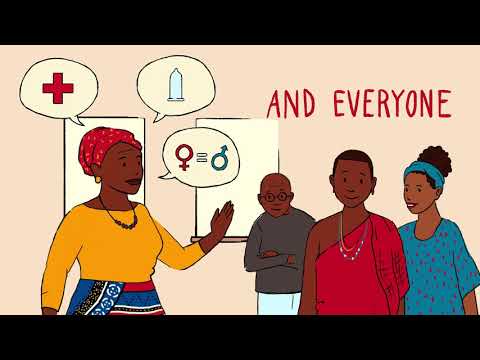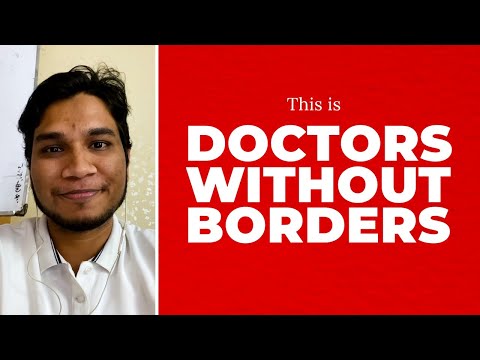9 Best Charities That Combat Malaria (Complete 2024 List)
Affiliate Disclosure
Hey fellow impactful ninja ?
You may have noticed that Impactful Ninja is all about providing helpful information to make a positive impact on the world and society. And that we love to link back to where we found all the information for each of our posts.
Most of these links are informational-based for you to check out their primary sources with one click.
But some of these links are so-called "affiliate links" to products that we recommend.
Why do we add these product links?
First and foremost, because we believe that they add value to you. For example, when we wrote a post about the environmental impact of long showers, we came across an EPA recommendation to use WaterSense showerheads. So we linked to where you can find them. Or, for many of our posts, we also link to our favorite books on that topic so that you can get a much more holistic overview than one single blog post could provide.
And when there is an affiliate program for these products, we sign up for it. For example, as Amazon Associates, we earn from qualifying purchases.
What do these affiliate links mean for you?
First, and most importantly, we still only recommend products that we believe add value for you.
When you buy something through one of our affiliate links, we may earn a small commission - but at no additional costs to you.
And when you buy something through a link that is not an affiliate link, we won’t receive any commission but we’ll still be happy to have helped you.
What do these affiliate links mean for us?
When we find products that we believe add value to you and the seller has an affiliate program, we sign up for it.
When you buy something through one of our affiliate links, we may earn a small commission (at no extra costs to you).
And at this point in time, all money is reinvested in sharing the most helpful content with you. This includes all operating costs for running this site and the content creation itself.
What does this mean for me personally?
You may have noticed by the way Impactful Ninja is operated that money is not the driving factor behind it. It is a passion project of mine and I love to share helpful information with you to make a positive impact on the world and society. However, it's a project in that I invest a lot of time and also quite some money.
Eventually, my dream is to one day turn this passion project into my full-time job and provide even more helpful information. But that's still a long time to go.
Stay impactful,
Malaria is the deadliest disease in human history, infecting notable figures such as George Washington and Alexander the Great. Unfortunately, the prevalence and deadliness of the disease are not lost to history: in 2022 alone, there were more than 249 million confirmed cases of malaria, more than half a million of which were fatal. Furthermore, impoverished communities, particularly in sub-Saharan Africa, carry a disproportionately high malaria burden, accounting for 94% of all cases and 95% of all deaths. Luckily, charities are working to improve the availability and efficacy of malaria vaccinations. So we had to ask: What are the best charities that combat malaria?
The best charities that combat malaria are the Malaria No More Fund and the Against Malaria Foundation. Charities such as the PATH and Gavi work to improve the efficacy and availability of vaccines through research and collaboration.
Whether you want to help a community health worker hone their treatment skills, provide insecticide-treated bed nets to children and their families, or fund research that improves the efficacy and availability of anti-malarial medications, there is a charity for you. Keep reading to learn more about what the best charities that combat malaria are all about, how they work, and what your best way would be to contribute.
Here’s What All the Best Charities That Combat Malaria Have in Common
The charities on this list were chosen based on their mission, impact, transparency ratings, and achievements.
They operate around the world to combat malaria, wherever they are needed.
Many of these charities provide direct training and opportunities to strengthen local healthcare systems, while others provide community education and awareness on malaria prevention. Some cater to specific populations like children and pregnant women. Others provide diagnosis and treatment to anyone exhibiting symptoms.
Some of the charities below focus on direct prevention by providing tools like bed nets and spraying insecticides, while others focus on advocacy and policy change to guide government leaders in the fight against malaria.
Yet, they all share the same goal: to combat and eventually eradicate malaria, globally.
These Are the 9 Best Charities That Combat Malaria in 2024
Below are our favorite charities that combat malaria (you can click on their link to directly jump to their section in this article):
Best Charities That Combat Malaria
(At the end of this article we’ll also share our six-step approach on how you can select the best charity to support.)
Malaria No More Fund: No One Should Die from a Mosquito Bite
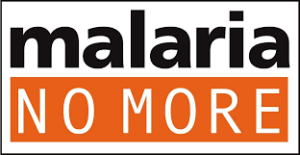
🔎
Their transparency & ratings:
The Malaria No More Fund holds a 4-star rating from Charity Navigator.
“The end of malaria starts now.”
Malaria No More Fund
⚒️
What they do:
The Malaria No More Fund combats malaria by partnering with both public and private organizations around the world to identify, adapt, and advance global progress against the disease. They work with leaders in significantly impacted countries or regions to evaluate boundaries to malaria eradication, including political support, funding levels, and resource gaps. For example, in 2016, they began their extensive landscape evaluation of India’s efforts to end malaria by 2030 and used their findings to design a tailored malaria eradication program. They also launched Forecasting Healthy Futures, an initiative designed to unite stakeholders in exploring how micro-weather data can help eliminate mosquito-borne diseases, including malaria.
🚀
What they’ve achieved:
Since their founding, the Malaria No More Fund has helped save over 10.6 million lives and prevented an additional 1.7 billion cases of malaria globally. For example, they helped India’s highest malaria-burdened state, Odisha State, reduce malaria cases by over 80% between 2017 and 2018, and they continue to support other states attempting to replicate that success. Furthermore, they launched India’s first awareness campaign regarding mosquito-borne illness in 2020. By 2021, the campaign had reached almost 181 million people and resulted in a 4.8% increase in bed net usage amongst 18 to 24-year-olds.
✨
Ways to contribute:
You can donate directly to the Malaria No More Fund through their website. You can also support the charity by following them on social media or exploring employment opportunities.
Against Malaria Foundation: Keeping Beds Mosquito-Free
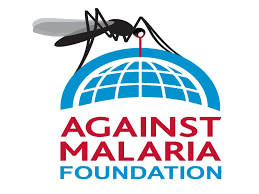
🔎
Their transparency & ratings:
The Against Malaria Foundation holds a 4-star rating from Charity Navigator and a Platinum Seal of Transparency from GuideStar.
“We help protect people from malaria.”
Against Malaria Foundation
⚒️
What they do:
The Against Malaria Foundation combats the spread of malaria by fundraising for, distributing, and monitoring the use of insecticide-treated bednets for children and families in malaria-endemic countries. With a significant level of pro-bono support, the organization dedicates 100% of funds received from the public to purchasing bed nets. Next, they partner with other organizations, including Amref Health Africa, Save the Children, and World Vision, to distribute bed nets to protect every sleeping space from malaria-carrying mosquitos and disrupt the transmission of the disease. And, they ensure the continued use of the nets by conducting post-distribution surveys twice a year.
🚀
What they’ve achieved:
Since their founding, the Against Malaria Foundation has raised $565 million, funding the purchase and distribution of more than 256 million insecticide-treated bed nets, and protecting almost 462 million people from contracting the disease in their sleep. Furthermore, the charity remains dedicated to complete transparency. For example, they publish every single donation received along with a link so donors can see exactly where their funded bed nets are distributed. As another example, they publish all information related to distribution, from Distribution Proposals to Post-Distribution Surveys.
✨
Ways to contribute:
You can donate directly to the Against Malaria Foundation through their website. You can also support the organization through fundraising.
PATH: Innovators in Healthcare

🔎
Their transparency & ratings:
PATH holds a 3-star rating from Charity Navigator and the Platinum Seal of Transparency from GuideStar.
“Better health moves humanity forward.”
PATH
⚒️
What they do:
PATH’s Malaria Vaccine Initiative works with partners in the private sector, government, and academia to combat malaria. Their strategy encompasses not only the near-term goal of controlling malaria in vulnerable communities but also the long-term goal of complete eradication. For example, their first-generation vaccine work is focused on partnering with country leaders to promote the adoption of RTS, S, the first proven-effective malaria vaccine. Moreover, they support research and development for next-generation vaccines that are more effective, durable, and require fewer doses than first-generation vaccines. And, they improve access to vaccines in endemic countries by helping global and country partners analyze data to optimize distribution.
🚀
What they’ve achieved:
Since their founding, PATH has been a leader in healthcare innovation, including malaria vaccine development and adoption. For example, in 2001, they partnered with GlaxoSmithKline to develop RTS, S, which began clinical trials in 2004 and was officially approved by the World Health Organization (WHO) in 2022. Introduced in Burkina Faso in February 2024, the vaccine has immunized around 250,000 children in the region to date.
✨
Ways to contribute:
You can donate directly to PATH through their website. You can also support the organization through workplace giving and skill sharing.
Gavi: Advancing Vaccine Equity

🔎
Their transparency & ratings:
Gavi holds a 4-star rating from Charity Navigator.
“Saving lives and protecting people’s health by increasing equitable and sustainable use of vaccines.”
Gavi
⚒️
What they do:
Gavi combats malaria by improving access to new vaccines for millions of vulnerable children. They operate by distributing grants to eligible countries for various types and levels of support. For example, they supported countries in sub-Saharan Africa in the initial introduction and distribution of the RTS, S vaccine by providing financial and logistical assistance. Furthermore, their eligibility, transition, and co-financing policies help ensure that countries can independently sustain high immunization coverage and access to vaccines.
🚀
What they’ve achieved:
Since their founding, Gavi has vaccinated over 1 billion children in 78 lower-income countries against infectious diseases like malaria, averting more than 17.3 million future deaths. For example, in 2022 alone, they immunized over 68 million children. And, in the same year, $162 million was contributed by countries towards the co-financing of Gavi-supported vaccines. Moreover, their sustainability policies resulted in 54 vaccine programs becoming self-financed by countries previously relying on Gavi support.
✨
Ways to contribute:
You can donate directly to Gavi through their website. You can also support the charity by subscribing to their newsletter.
Amref Health Africa: Strengthening Communities Against Malaria

🔎
Their transparency & ratings:
Amref Health Africa holds a 4-star rating from Charity Navigator and a Platinum Seal of Transparency from GuideStar.
“Transforming Africa’s healthcare from within.”
Amref Health Africa
⚒️
What they do:
Amref Health Africa combats malaria through their community-based programs that strengthen healthcare systems and by training African health workers. For example, in partnership with WHO-AFRO, they offer the External Competency Assessment for Malaria Microscopists course to local healthcare workers to ensure the accurate and safe diagnosis of malaria. Furthermore, in Kenya, they utilize grant funding from the Global Fund to support Community Case Management of Malaria and strengthen healthcare systems. Moreover, they combat malaria directly by distributing bed nets, spraying insecticides, and increasing access to Artemisinin combination therapy.
🚀
What they’ve achieved:
Since their founding, Amref Health Africa has become the largest Africa-based international health development organization, delivering health services and training to over 30 million people across 35 African countries each year. In 2022 alone, they tested over 740,000 people for malaria and treated more than 458,000 for the disease. In the same year, their Institute of Capacity Building trained over 2,400 health workers to diagnose and treat malaria.
✨
Ways to contribute:
You can donate to Amref Health Africa through their website. You can also support the charity by attending an event or following their social media.
Doctors Without Borders: Impartial Medical Aid

🔎
Their transparency & ratings:
Doctors Without Borders holds a 4-star rating from Charity Navigator and a Platinum Seal of Transparency from GuideStar.
“Medical care where it is needed most.”
Doctors Without Borders
⚒️
What they do:
Doctors Without Borders combats malaria by focusing on improving prevention, reaching and treating the most vulnerable, and enhancing planning for malaria seasons. For example, they provide malaria testing and treatment to isolated, remote, and rural areas by utilizing mobile health clinics, and provide transportation for cases requiring hospitalization. As another example, their programs incorporate various prevention strategies, from spraying larvicide and distributing bed nets to administering preventative anti-malarial medications to children monthly. Furthermore, the organization engages in research to combat medically-resistant strains of malaria, particularly in Southeast Asia.
🚀
What they’ve achieved:
Since their founding, Doctors Without Borders has helped tens of millions of people in over 70 countries access high-quality health care regardless of race, religion, creed, or political affiliation. In 2022 alone, they treated almost 4.3 million cases of malaria globally. Furthermore, their malaria research has been published in over 100 peer-reviewed journals, changing the course of clinical practice and humanitarian advocacy. And, in 1999, they were awarded a Nobel Peace Prize for the non-discriminatory nature of their work.
✨
Ways to contribute:
You can donate directly to Doctors Without Borders through their website. You can also support the charity by attending an event or by organizing a fundraiser.
World Vision: Bringing Hope to Children Around the World

🔎
Their transparency & ratings:
World Vision holds a 4-star rating from Charity Navigator and a Platinum Seal of Transparency from GuideStar.
“Pulling up the roots of poverty and planting the seeds of change.”
World Vision
⚒️
What they do:
World Vision combats malaria through programs that focus on prevention and treatment. For example, they work to mitigate the spread of malaria by distributing insecticide-treated bed nets and indoor residual spraying of insecticides. They also promote intermittent presumptive treatment for pregnant women to reduce the risk of contracting the disease. Furthermore, they strengthen health systems by enhancing access to proper diagnosis, treatment, and care, including training community health workers to be providers. And, they address sanitation issues that create breeding grounds for malaria-carrying mosquitos.
🚀
What they’ve achieved:
Since their founding, World Vision has protected millions of children and families from contracting and succumbing to malaria. For example, from 2016 to 2021, they distributed over 54.5 million insecticide-treated mosquito nets and provided indoor residual spraying to more than 1.4 million households. In that same period, over 6.5 million people with suspected malaria were tested and treated for the disease by community health workers who had been trained by the charity.
✨
Ways to contribute:
You can donate directly to World Vision via their website or fund a microloan. You can also support the charity by sponsoring a child.
Save the Children: Ensuring a Healthy Start
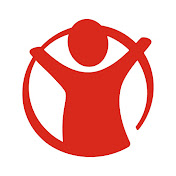
🔎
Their transparency & ratings:
Save the Children holds a 4-star rating from Charity Navigator, as well as a Platinum Seal of Transparency from GuideStar.
“All children deserve a healthy start in life.”
Save the Children
⚒️
What they do:
Save the Children partners with organizations in malaria-endemic countries to implement programs that combat the disease. For example, they work to scale up community-based activities to eradicate malaria across the Ivory Coast, Africa, including training community health workers and by providing ongoing public awareness campaigns. As another example, they support Nepal’s goal to eradicate malaria by 2025 by helping increase access to timely diagnosis and treatment and providing follow-up of confirmed malaria cases to ensure treatment adherence according to the National Malaria Treatment Protocol.
🚀
What they’ve achieved:
Since their inception, Save the Children has impacted over 1 billion children’s lives, including protecting those in malaria-endemic regions from the disease. For example, in 2021 alone, they supported community health workers in Ivory Coast as they treated almost 1.2 million individuals for malaria, 712,219 of whom were children under 5. In the same year, their teams in Nepal distributed almost 50,000 insecticide-treated bed nets and tested nearly 300,000 people for the disease, providing treatment in all confirmed cases.
✨
Ways to contribute:
You can donate directly to Save the Children via their website. You can also help them combat malaria by sponsoring a child in a malaria-endemic country, purchasing insecticide-treated bed nets, or funding malaria treatment.
CDC Foundation: Collaboration for Malaria Eradication

🔎
Their transparency & ratings:
The CDC Foundation holds a 4-star rating from Charity Navigator.
“Together, our impact is greater.”
CDC Foundation
⚒️
What they do:
The CDC Foundation combats diseases, including malaria, by organizing private resources to support the CDC as they develop, implement, and improve their life-saving health programs. For example, their Bed Nets for Children Program helps the CDC’s teams purchase and distribute insecticide-treated bed nets to children and their families to protect them from mosquitos. Furthermore, they support research and data collection to guide future efforts to eradicate malaria, like exploring the introduction of genetically modified mosquitoes to control natural populations of malaria vectors. They also support programs designed to strengthen healthcare systems in vulnerable communities, including equipping a lab in Senegal to build workforce capacity to monitor malaria drug resistance.
🚀
What they’ve achieved:
Since their founding, the CDC Foundation has raised more than $2.2 billion to support over 1,400 programs, including those working to treat malaria around the world. In 2023 alone, they secured almost $275 million to fund 138 programs, impacting millions of people across 77 countries.
✨
Ways to contribute:
You can donate directly to the CDC Foundation through their website. You can also support the organization by creating your own fundraiser or following them on social media.
How Can You Select the Best Charities to Support?
The charities on the list are, we deem, the best charities that combat malaria. However, you may have a particular charity you want to support. Let’s look at what you can do to ensure your contribution has the most significant impact.
- Check out the charity website. Charities that are worthy of your donations are transparent in their mission and their figures. Familiarize yourself with their history, mission, and values. Their website usually is the best place to start.
- Identify the charity’s mission. Without a goal, the charity is likely to fail. If the charity’s mission needs to be clarified, it’s probably worth looking for a charity that does have a clear mission.
- Check if the charity has measurable goals. An effective charity has clear goals. You want to know your donation will help the charity reach its goals. But if it doesn’t have targets, it’s likely to fail or squander your gift. The charity should be able to account for its spending and supply evidence of the work they do.
- Assess the successes or goals the charity has achieved. You wouldn’t invest in a business if it kept missing its targets. In the same way, charities are like this too. If no one is assessing a charity’s progress in reaching its targets, the chances are they’re not making a substantial positive change.
- Check the charity’s financials and stats. Trustworthy organizations will publish financial statements and reports each year. Some might be exempt from having to do so, but they should be able to provide them to public members who are interested in donating.
- Locate sources who work with or benefit from the charity. Word of mouth and first-hand experience of a charity’s work lets you know the charity’s quality. If you’re able to do so, check out the charity for yourself or speak to someone familiar with it. This way, your donation will go to the right place.
How Can You Best Support These Charities?
After you’ve made your decision, it’s time for you to decide on how you’d like to help the charities you’ve chosen. Check how you can help – each charity runs specific programs that have unique aims. Find out what the aim of such programs is and whether they are right for you.
Here are a few ways you can help your chosen charity:
- Donate money. You can find donation pages on the websites of most charities. Your donation can be a one-time payment, or you can set it to be deducted regularly at different intervals. You can mostly pay via credit card, but some charities also take PayPal or Bitcoin payments.
- Buy their official merchandise. Charities can also raise money by selling merchandise. So, you can support them by buying the mugs, shirts, caps, pens, pencils, and any other such items they may be selling. Ideally, you should buy as much as you can to share and spread the word about the charity’s activities.
- Engage in volunteer work. As you’ve seen from our descriptions above, some charities engage in a lot of local and grassroots programs. You can help by taking on and organizing the program in your local area.
- Help their fundraising efforts. You can spread the word about the charity in your workplace, school, church, etc., and hold creative fundraising drives on social media or offline within your small circles.
- Share their stories. Most charities have compelling stories that you can share with your audience to attract more people to the cause.
Final Thoughts
Now it is up to you to select the charity that resonates most with you. And whichever charity you end up choosing and contributing to, we are sure that they will immensely appreciate your support. Hopefully, the information within this article has made this selection process a bit easier for you to support charities dedicated to combatting malaria—based on the causes that matter most to you.
Stay impactful,

PS: Finally, I want to leave you with a thought-provoking TED talk from Dan Pallotta, a leading philanthropic activist and fundraiser, about what is wrong with the way we think about charities – and what we can do about it:
Sources
- Business Insider: Malaria Video
- WHO: Malaria Fact Sheet
- Malaria No More Fund: Home
- Wikipedia: President’s Malaria Initiative
- Charity Navigator: Malaria No More Fund
- Malaria No More Fund: Inida
- Malaria No More Fund: Forecasting Healthy Futures
- Malaria No More Fund: Bite Ko Mat Lo Lite
- Malaria No More Fund: 2021 Highlights
- Malaria No More Fund: Donate
- Malaria No More Fund: Jobs and Internships
- Against Malaria Foundation: Home
- GiveWell: Top Charities
- Charity Navigator: Against Malaria Foundation
- GuideStar: Against Malaria Foundation
- Against Malaria Foundation: What We Do
- Against Malaria Foundation: Distribution Partners
- Against Malaria Foundation: What We Do
- Against Malaria Foundation: Donations
- Against Malaria Foundation: Transparency
- Against Malaria Foundation: Distribution Information We Publish
- Against Malaria Foundation: Donate
- Against Malaria Foundation: Fundraise
- PATH: Home
- GuideStar: PATH
- Charity Navigator: PATH
- PATH: MalariaVaccine.org
- PATH: Malaria: First-Generation Vaccines
- PATH: Malaria: Next-Generation Vaccines
- World Health Organization: Home
- PATH: Malaria: Vaccine Access
- Al Jazeera: Malaria Eradication
- PATH: Donate
- PATH: Catalyst Circle
- Gavi: Home
- Gavi: About
- The Bill and Melinda Gates Foundation: Immunization
- Charity Navigator: Gavi
- Gavi: Health Systems and Immunization Strengthening
- Gavi: Vaccine Support
- Gavi: Gavi Opens Applications for Malaria Vaccine Rollout Support
- Gavi: Sustainability
- Gavi: 2022 Annual Report
- Gavi: Donate
- Gavi: News and Resources
- Amref Health Africa: Home
- Charity Navigator: Amref Health Africa
- GuideStar: Amref Health Africa
- WHO: African Region
- Amref Health Africa: Training Malaria Microscopists
- The Global Fund: Malaria
- Amref Health Africa: Malaria Grant
- Amref Health Africa: Innovative Health Solutions
- WHO: Artemisinin Resistance
- Amref Health Africa: Our Achievements
- Amref Health Africa: 2022 Annual Report
- Amref Health Africa: Donate
- Amref Health Africa: Events
- Doctors Without Borders: Home
- Charity Navigator: Doctors Without Borders
- GuideStar: Doctors Without Borders
- Doctors Without Borders: Malaria
- Doctors Without Borders: History
- Doctors Without Borders: 2022 Annual Report
- Doctors Without Borders: Medical Response: Malaria
- Doctors Without Borders: Donate
- Doctors Without Borders: Events
- Doctors Without Borders: Fundraise
- World Vision: Our History
- Forbes: World Vision
- Charity Navigator: World Vision
- GuideStar: World Vision
- World Vision: Malaria Programming
- World Health Organization: Intermittent Presumptive Treatment
- World Vision: Community Health Workers
- World Vision: 2022 Annual Report
- World Vision: Donate
- World Vision: Funa a Microloan
- World Vision: Sponsor a Child
- Save The Children: Home
- Save the Children: About Us
- Charity Navigator: Save the Children
- GuideStar: Save the Children
- Save the Children: Ivory Coast Malaria Program
- Save the Children: Nepal Malaria Program
- Save the Children: Education
- Save the Children: Protection
- Save the Children: Health
- Save the Children: 2022 Annual Report
- Save the Children: Donate
- Save the Children: Donate: Bed Nets
- Save the Children: Donate: Malaria Treatment
- Save the Children: Sponsor a Child
- CDC Foundation: Home
- Charity Navigator: CDC Foundation
- CDC Foundation: Bed Nets for Children.
- CDC Foundation: Controlling Mosquito Vectors
- CDC Foundation: Antimalarial Resistance Monitoring
- CDC Foundation: Partners
- CDC Foundation: 2023 Donor Report
- CDC Foundation: Donate
- CDC Foundation: Fundraise
- CDC Foundation: Take Action




